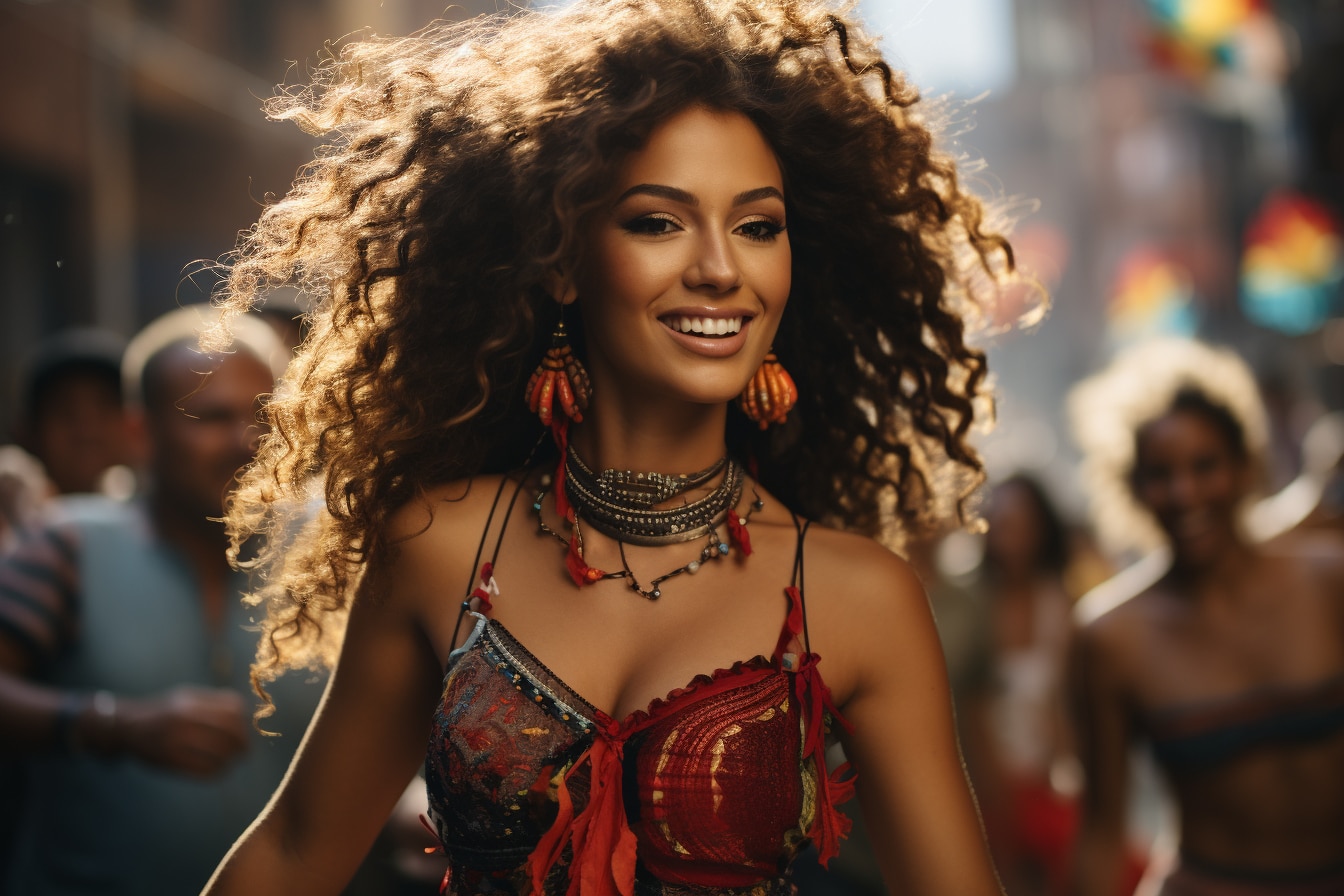The AI revolution in fashion: creating realistic virtual garments
The fashion industry is constantly evolving, and new technologies are playing an increasingly important role in this field. Among these, generative artificial intelligence (AI) now offers the possibility of creating realistic virtual clothing images. In this article, find out how AI is transforming the fashion industry and creating a new experience for consumers.
What is generative AI?
Generative AI is a specific branch of artificial intelligence that focuses on creating images, sounds or texts from existing data. It uses complex algorithms to analyze and learn from this data, then generate new creations similar to the examples provided. In the fashion sector, this translates into the creation of realistic virtual clothing images from existing photos or 3D models.
The applications of generative AI in fashion
Creating virtual prototypes
 Previously, creating prototypes for new garments required considerable time and resources. Now, thanks to generative AI, virtual prototypes can be created quickly and cost-effectively. Designers can visualize their creations before they go into production, saving materials and time. What’s more, these virtual prototypes can be easily modified to test different color or pattern combinations.
Previously, creating prototypes for new garments required considerable time and resources. Now, thanks to generative AI, virtual prototypes can be created quickly and cost-effectively. Designers can visualize their creations before they go into production, saving materials and time. What’s more, these virtual prototypes can be easily modified to test different color or pattern combinations.
Trend research
Generative AI can also be used to analyze fashion trends by analyzing thousands of images of garments and accessories. Based on this data, AI can identify popular styles and predict future trends. This gives fashion brands a competitive edge, enabling them to offer collections tailored to consumers’ tastes and expectations.
Personalized shopping experiences
By using artificial intelligence to create realistic virtual clothing images, it is now possible to offer customers a personalized shopping experience. Consumers can view pieces on virtual mannequins, or even on themselves thanks to augmented reality, and see how the garments fit and fall on the body. This enables customers to make informed decisions about their purchases, while reducing returns and associated costs for companies.
Concrete examples of the use of generative AI in fashion
AI-assisted design tools
Numerous AI-assisted design tools are now available to help fashion designers design realistic virtual garments. These tools allow designers to quickly sketch their ideas, then let the AI transform these sketches into realistic images of garments, adding textures, shadows and intricate details.
Digitizing wardrobes
 With the advent of virtual clothing, some companies are now enabling consumers to digitize their existing wardrobes. Using generative AI to create realistic images of their favorite pieces, customers can explore different outfit combinations and even share their looks with friends on social networks.
With the advent of virtual clothing, some companies are now enabling consumers to digitize their existing wardrobes. Using generative AI to create realistic images of their favorite pieces, customers can explore different outfit combinations and even share their looks with friends on social networks.
Fashion collections generated entirely by AI
Some fashion brands have already taken the plunge by creating collections entirely generated by AI. By analyzing current trends and consumer preferences, artificial intelligence can design unique and innovative garments, tailored to market tastes. This innovative approach paves the way for a new era in fashion, where technology and creativity come together to deliver ever more captivating experiences for consumers.
The challenges of using generative AI in fashion
 Despite the many benefits of generative AI in fashion, several challenges remain. Firstly, large quantities of data are needed to train the algorithms and obtain reliable results. In addition, generative AI also raises questions about intellectual property and human creativity. Who owns the rights to a creation conceived by an algorithm? And can we really speak of creativity when the machine “imitates” existing trends without truly innovating?
Despite the many benefits of generative AI in fashion, several challenges remain. Firstly, large quantities of data are needed to train the algorithms and obtain reliable results. In addition, generative AI also raises questions about intellectual property and human creativity. Who owns the rights to a creation conceived by an algorithm? And can we really speak of creativity when the machine “imitates” existing trends without truly innovating?
Finally, let’s not forget the ethical issues involved in using artificial intelligence in fashion. For example, the protection of consumers’ privacy must be taken into account when analyzing their clothing preferences or digitizing their wardrobe.
In conclusion, generative AI offers many opportunities for the fashion industry, but it also raises important questions. Nevertheless, with responsible and ethical use, this technology has the potential to radically transform the way we design, buy and interact with clothes.




